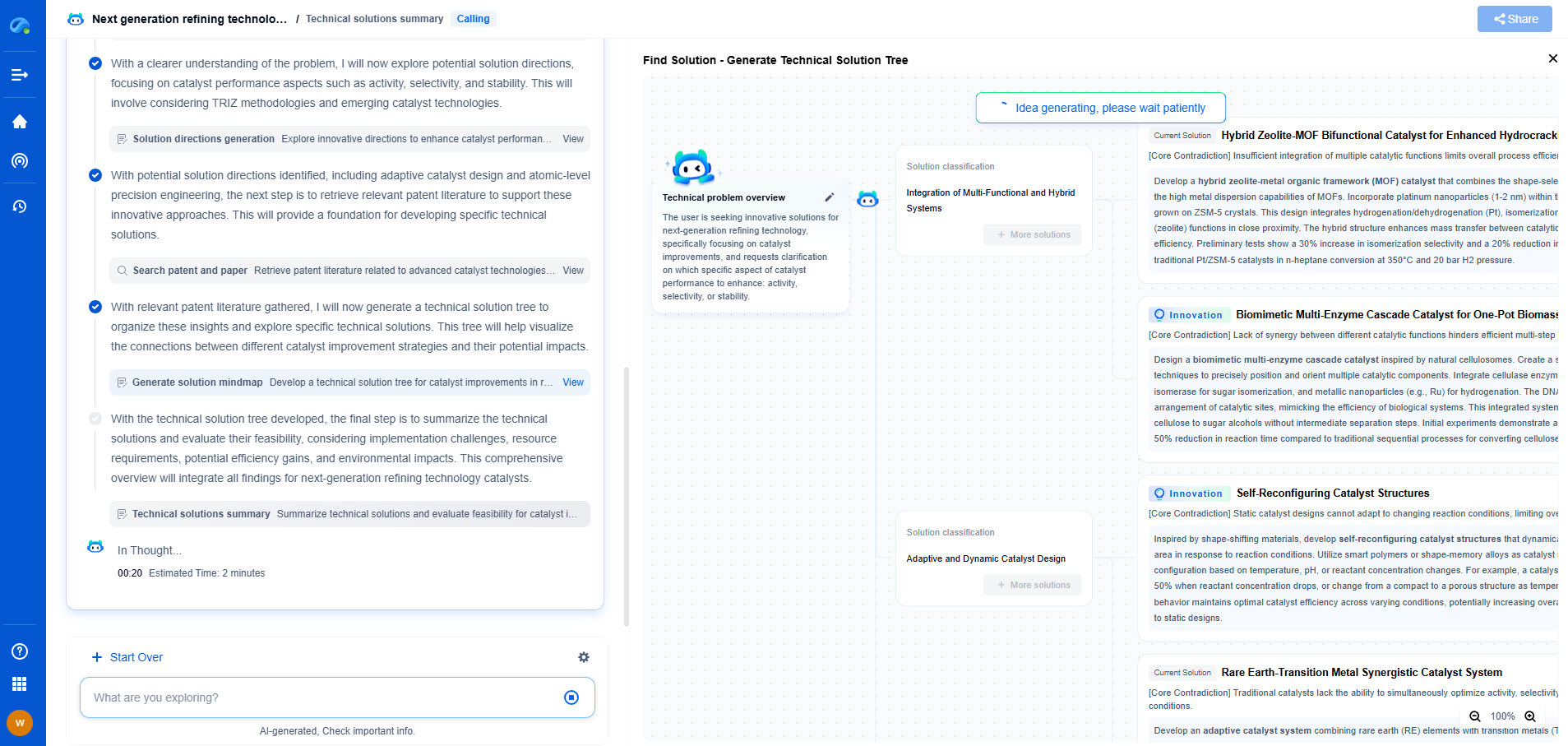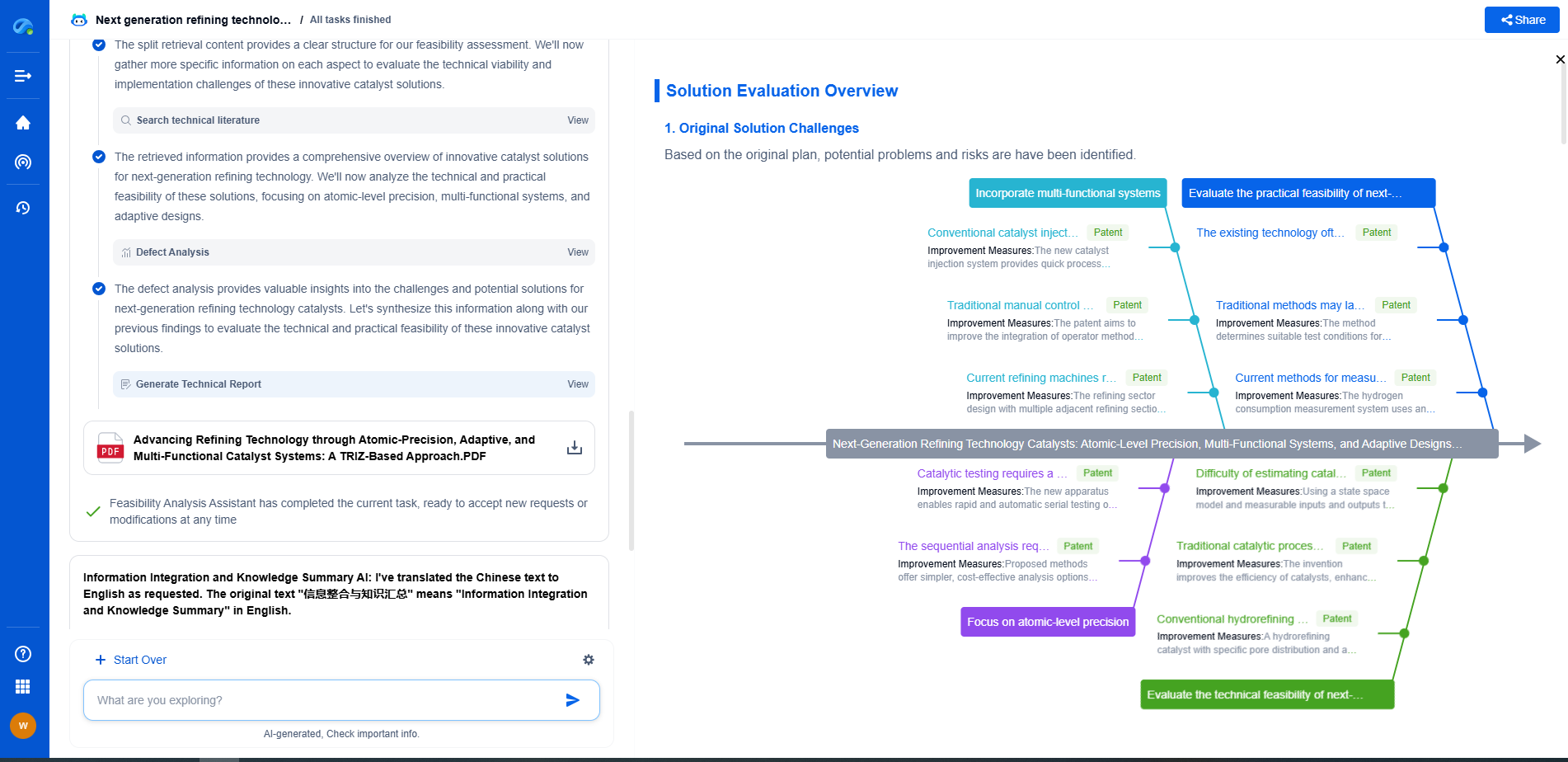TPMS Sensors Explained: Direct vs Indirect Tire Pressure Monitoring
JUL 14, 2025 |
Tire Pressure Monitoring Systems (TPMS) play a crucial role in vehicle safety and efficiency. The primary function of a TPMS is to monitor the air pressure inside pneumatic tires and inform the driver when the pressure falls below a certain threshold. Maintaining optimal tire pressure is essential for ensuring proper vehicle handling, fuel efficiency, and prolonging tire life. There are two main types of TPMS: direct and indirect. Understanding the differences between the two can help vehicle owners make informed decisions about maintenance and safety.
Direct TPMS: How It Works
Direct TPMS uses pressure sensors that are mounted inside each tire to directly measure the air pressure. Each sensor transmits this data to a central control module, which then alerts the driver when the pressure drops below a pre-set level. This system provides real-time, accurate readings of each tire's pressure, allowing for precise monitoring.
Advantages of Direct TPMS
One of the primary advantages of direct TPMS is its accuracy. Since the system measures the actual pressure inside the tire, it can provide instant alerts if a tire is under-inflated. Additionally, direct TPMS can detect a gradual loss of pressure over time, helping drivers address issues before they become severe. This level of precision can enhance safety and performance by ensuring tires are always properly inflated.
Limitations of Direct TPMS
Despite its accuracy, direct TPMS has some limitations. The sensors inside the tires are battery-powered and eventually require replacement, which can be costly. Additionally, the sensors can be damaged during tire installation or maintenance, leading to further expenses. The initial setup cost for direct TPMS is often higher compared to indirect systems due to the need for individual sensors in each tire.
Indirect TPMS: An Alternative Approach
Indirect TPMS takes a different approach by using the vehicle's anti-lock braking system (ABS) sensors to estimate tire pressure. Instead of measuring the pressure directly, it monitors the rotational speed of each tire. When a tire loses pressure, its diameter decreases slightly, causing it to rotate faster than the others. The system detects this variation and triggers a warning to the driver.
Advantages of Indirect TPMS
Indirect TPMS is generally less expensive to install and maintain compared to direct systems, as it does not require additional sensors inside each tire. This system is based on existing ABS sensors, making it a budget-friendly option for manufacturers and vehicle owners alike. Indirect TPMS is also less susceptible to damage during tire servicing since it relies on software rather than physical sensors inside the tires.
Limitations of Indirect TPMS
Though indirect TPMS is cost-effective, it is not as precise as its direct counterpart. It cannot measure the exact pressure in each tire, only detecting significant differences in rotational speed. This means it may not provide alerts for gradual pressure loss or slight under-inflation, potentially compromising safety. Moreover, indirect TPMS may require recalibration after tire rotation or replacement, adding to maintenance tasks.
Choosing the Right TPMS for Your Needs
When deciding between direct and indirect TPMS, consider factors such as budget, precision requirements, and maintenance preferences. Direct TPMS offers the most accurate pressure monitoring, which can be beneficial for those prioritizing safety and performance. However, it comes with higher costs and potential sensor maintenance. Indirect TPMS presents a cost-effective alternative with simpler maintenance needs, though it may not offer the same level of precision.
Conclusion
Understanding the differences between direct and indirect TPMS systems is essential for making informed decisions about tire maintenance and vehicle safety. Both systems have their unique advantages and limitations, and the choice ultimately depends on individual needs and preferences. Regardless of the type of TPMS chosen, maintaining proper tire pressure is crucial for safe driving, fuel efficiency, and maximizing tire lifespan. Always ensure your TPMS is functioning correctly and address any alerts promptly to enjoy a safer and more efficient driving experience.
From 5G NR to SDN and quantum-safe encryption, the digital communication landscape is evolving faster than ever. For R&D teams and IP professionals, tracking protocol shifts, understanding standards like 3GPP and IEEE 802, and monitoring the global patent race are now mission-critical.
Patsnap Eureka, our intelligent AI assistant built for R&D professionals in high-tech sectors, empowers you with real-time expert-level analysis, technology roadmap exploration, and strategic mapping of core patents—all within a seamless, user-friendly interface.
📡 Experience Patsnap Eureka today and unlock next-gen insights into digital communication infrastructure, before your competitors do.
- R&D
- Intellectual Property
- Life Sciences
- Materials
- Tech Scout
- Unparalleled Data Quality
- Higher Quality Content
- 60% Fewer Hallucinations
Browse by: Latest US Patents, China's latest patents, Technical Efficacy Thesaurus, Application Domain, Technology Topic, Popular Technical Reports.
© 2025 PatSnap. All rights reserved.Legal|Privacy policy|Modern Slavery Act Transparency Statement|Sitemap|About US| Contact US: help@patsnap.com

